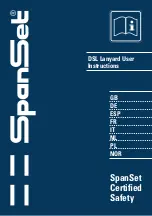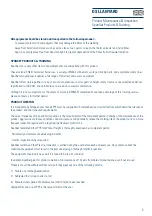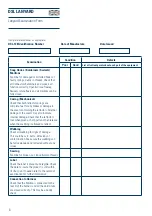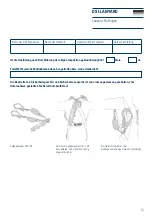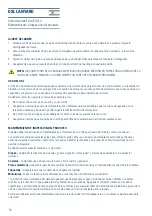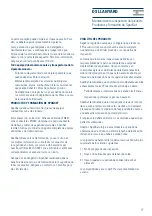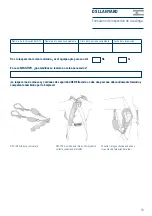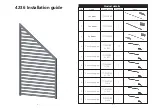
4
DSL LANYARD
Instuctions for Use
Product Maintenance & Inspection
FITTING TO THE HARNESS
1. Position the DSL such that the Velcro closings are in contact with the harness web, leaving the shock absorbing pack
outermost.
2. Check that the connector is secured to the harness prior to any work at height.
3. Fit the Velcro closings to the appropriate section of harness web to retain the shock absorbing pack.
4. Ensure that after fi tting the retractable function of the lanyard has not been inhibited.
NOTE:
THE LANYARD CONNECTORS MUST NEVER BE RETAINED ON THE PRIMARY HARNESS WEBBING
STRAPS - ALWAYS USE A SACRIFICIAL PARKING POINT.
USING THE DSL
The DSL has been designed such that it is capable of being connected to two separate anchorage points without affecting the
dynamic performance. By attaching one leg of the DSL to an anchorage, Users are able to move to a new location safely before
connection to another anchorage point without the need to disconnect from the fi rst anchorage.
The following precautions must be followed during use:
1. Never connect more than one user to the DSL at any one time.
2. Always ensure that the swivels are free to rotate during work and that the lifelines do not become twisted or tangled as this
may inhibit the retracting function of the device.
3. Do not allow the lanyard to pass under the arms or between the legs during use.
4. Always ensure that the lanyard part is free from any structural deviation during use.
PRODUCT MAINTENANCE AND INSPECTION
The equipment must be given a full inspection when delivered to site/works, and before every use.
Current European standards state at least every 12 months the equipment must be visually examined by a competent person
authorised by SpanSet, and the results recorded. SpanSet recommends inspection by a competent person every 6 months.
Particular attention should be paid to the following:-
Webbing
- Check for cuts, cracks, tears, abrasion* and scorch marks, burns or chemical attack.
Stitching
- Look for broken stitch, loose or worn threads.
Metal ware
- Inspect for signs of damage/distortion/corrosion, and correct operation.
Labelling
- Ensure label details are legible.
Materials
- All webbing and threads used in this product are produced from polyester.
* Local abrasion as distinct from general wear may be caused by the passage of the webbing over sharp edges or protrusions
while under tension and may cause serious loss of strength. Slight damage to outer fi bres and occasional yarn may be
considered harmless but serious reduction in width or thickness of the webbing or serious distortion to the weave pattern should
lead to rejection.
The product should be immediately removed from service after being subjected to any fall, or if in any doubt about the product
condition.
The fabric part may be cleaned if required. The following procedure must be adhered to:
Use hand hot water with a mild detergent or disinfectant, then rinse with clean water, and allow drying naturally, out of direct
sunlight with the webbing part exposed. If you require more information please contact SpanSet UK Ltd.
Summary of Contents for DSL
Page 1: ...SpanSet Certified Safety DSL Lanyard User Instructions GB DE ESP FR IT NL PL NOR ...
Page 50: ...50 ...
Page 51: ...51 ...

